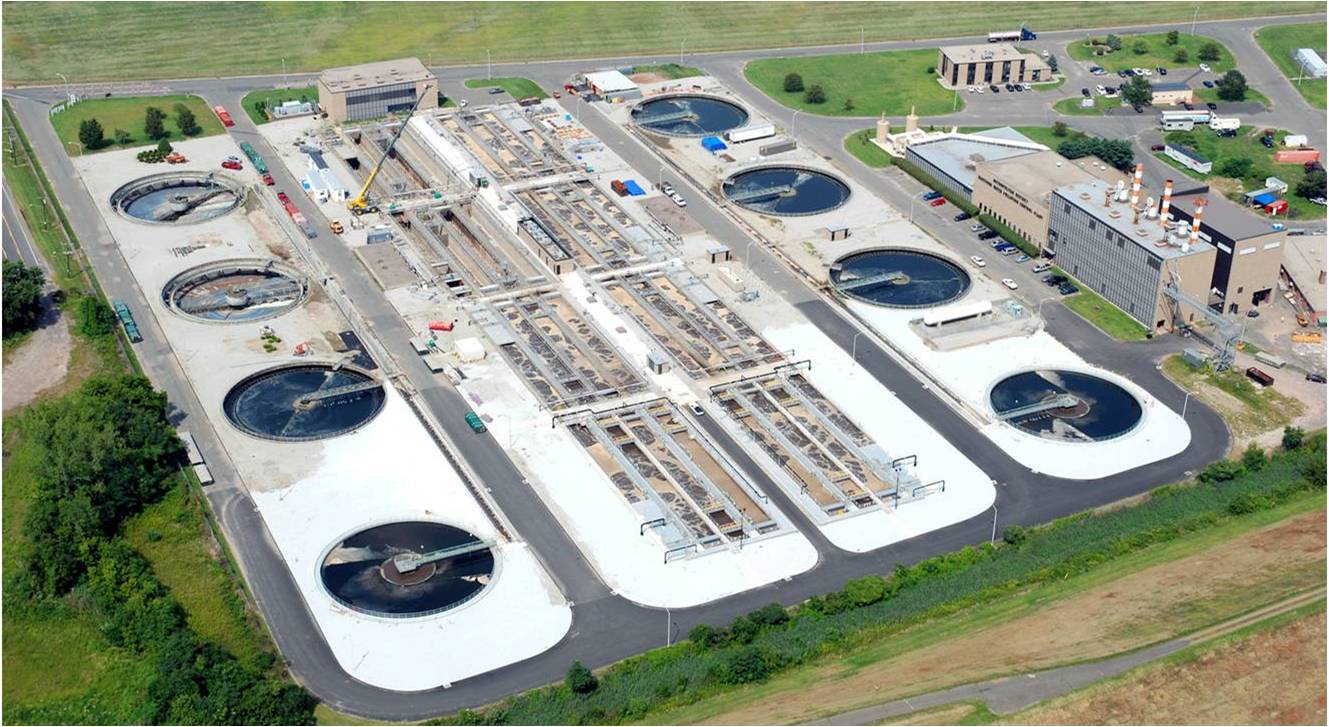Aeration Tanks and Final Settling Tanks

The Hartford Water Pollution Control Facility (WPCF) was originally constructed in the 1930’s to provide primary treatment. In the late 1960’s to early 1970’s, EPA’s Clean Water Act brought sweeping change to the wastewater industry, ushering in secondary treatment requirements for all wastewater plants in the US. The expansion to secondary treatment at the Hartford WPCF in the 1970’s provided the six aeration and six final settling tanks. At that time, the plans were developed to eventually add the 7th and 8th tanks, but was deferred until they were needed.
That time finally came in 2009 with the Aeration Tanks and Final Settling Tanks Project. The main driver behind adding these additional tanks was to provide more capacity to remove nitrogen. Nitrogen was not originally a concern when the plant was expanded in the 1970’s, but over time, the health of the Connecticut River and the Long Island Sound drove the need to nitrogen removal. Having more tanks means we can have more microorganisms. More microorganisms translates into more nitrogen removed, providing a cleaner and healthier Connecticut River and Long Island Sound.
Each aeration tank contains approximately 2 million gallons of activated sludge (microorganisms, a.k.a. bugs) The settling tanks are 125 feet in diameter. These large tanks allow the microorganisms to “rest” and build up their appetites for more nitrogen, getting a “ride” through very large return pumps back to the aeration tanks. The process goes on 24/7, with better performance in the warmer months.